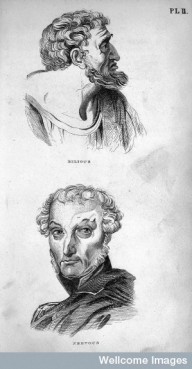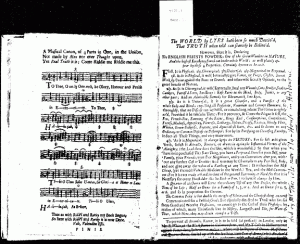“Fashion, like its companion luxury, may be considered as one of those excrescences which are attached to national improvement; Whilst one part of a polished nation is assiduously engaged in cultivating the arts and sciences, another part is not less busily employed in the invention and regulation of its fashions”.
So wrote James McKittrick Adair in 1790 at the beginning of his Essays on Fashionable Diseases. Adair was a medical luminary. According to the blurb at the start of his book he was variously a member of the Royal Medical Society, a Fellow of the Royal College of Physicians of Edinburgh, Physician to the Commander in Chief of the Leeward Islands and colonial troops, a judge on the Court of King’s Bench…the list went on.
As a physician to the wealthy Adair was in prime position to observe the types of conditions that afflicted his clients, but also the types of conditions that were becoming fashionable. The eighteenth century was perhaps the golden age of the ‘trendy’ disease. Where once sickness had been something feared and malign, some conditions were now becoming if not desirable then not unwelcome either. This was the age of the ‘heroic sufferer’; letters became filled with narratives of illness, commonly with the writer fashioning themselves into the role of embattled victim, wrestling with almost overwhelming symptoms and constantly surprised that they even had strength to hold a pen. These were the types of people who seemingly darkened the door of McKittrick Adair’s consulting rooms.
Of the evil influence of ‘fashion’, Adair was in no doubt. No longer was it just contained to dress, but influenced manners, politics, morals, religion and, worst of all in his view, even medicine was becoming enthralled to the “empire of fashion”. Whereas fashion had long influenced people in their choice of doctors, it was now influencing their choice of diseases too. This is how Adair explained the rise of fashionable diseases.
When doctor and patient were both persons of fashion, the patient would enquire of the doctor what condition their symptoms displayed. The doctor, not wishing to offend the polite patient’s ear with a lengthy medical discourse (or perhaps even not knowing!) gives the symptoms a general name – e.g. nervousness. As sickness and symptoms are a popular topic for discussion, the patient speaks to others and ascribes similarities where, Adair argued, none exist, but soon the condition becomes widespread…and fashionable!

In the early part of the eighteenth century “spleen, vapours or hyp was the fashionable disease”. Thirty years previously, a treatise on nervous diseases had been published by a professor of physic at Edinburgh. “Before this”, Adair argued, “people of fashion had not the least idea they had nerves”. At some stage an exasperated apothecary of his acquaintance, bowed under the weight of symptoms from a wealthy patron exclaimed “Madam, you are nervous!”. As Adair put it “the solution was quite satisfactory, the term became fashionable and spleen, vapours and hyp were forgotten”. But the process didn’t end there…

“Some years after this, Dr Coe wrote a treatise on biliary concretions, which turned the tide of fashion: nerves and nervous diseases were kicked out of doors, and bilious became the fashionable term. How long it will stand its ground cannot be determined”.
In many ways Adair was forward looking, and questioned the role of his fellow practitioners and their ministrations. He was particularly frustrated by the old Galenic practices of bleeding and purging, which still clung on in the late eighteenth century. “The idea of bleeding and purging each spring and fall, to prevent fevers and other diseases, was formerly very general in this country”. This was due to the “ignorance and knavery” of rural medicators who, he argued, feathered their nests by “disciplining whole parishes” in this way.
Worse still, many patients who only suffered slight complaints were now given to violently purging themselves using an array of potent substances from magnesia, salts and rhubarb to James’s purging pills, which destroyed the very health that they were trying to preserve! Adair’s point was that people were simply overdoing it with medicines. Instead of the odd purge, potion or pill, people were taking them every day, ill or not, to the extent almost that the cure became the kill!
Adair had other words of warning for the fashionable, in terms of their continued attendance at packed society balls. In places like Bath, where Adair had his practice, fashionable functions were everywhere and life for the well-heeled was a constant round of parties, balls and visits. Danger, however, lurked in this lifestyle.
Just as blacksmiths, bakers and glassmakers were weakened by the excessive heat of their trades, he argued, so the cramped, airless fug of the ballroom was deeply injurious to the human body. Heat and fire could only hurt the delicate constitution so, once again, in their quest to be fashionable, the dandies and fops of Bath society were putting their health in danger.

Part of the problem was the noxious air that became trapped in crowded rooms. The smell of sweaty, unwashed bodies mixed with stale perfume, alcohol and coal smoke to produce a toxic miasma that threatened to overwhelm those delicate constitutions. The very atmosphere of Bath made the whole situation worse, surrounded by hills and therefore trapping the residual warmth and creating a cauldron-like atmosphere. The steam from the hot baths added to this, as did the fires caused by so many visitors in their lodging houses. Bath was the modern Babylon as far as McKittrick Adair was concerned.
His book is interesting as it sits right on the cusp of change. He was ‘modern’ enough to see the changes in medicine and disease, but still essentially rooted in ideas of the past, e.g. the concept of bad airs and heat. He wrote as a professional who criticised other professionals but still took the same position as did elite physicians of the 16th and 17th centuries, who complained constantly about quacks and empiricks. Most of all Adair’s book fizzes with Enlightenment style and language, but also seems oddly familiar in tone. Even at 200 years distance, it feels like we could hold an interesting conversation with this man. What stories would he be able to tell us about his clients?!

